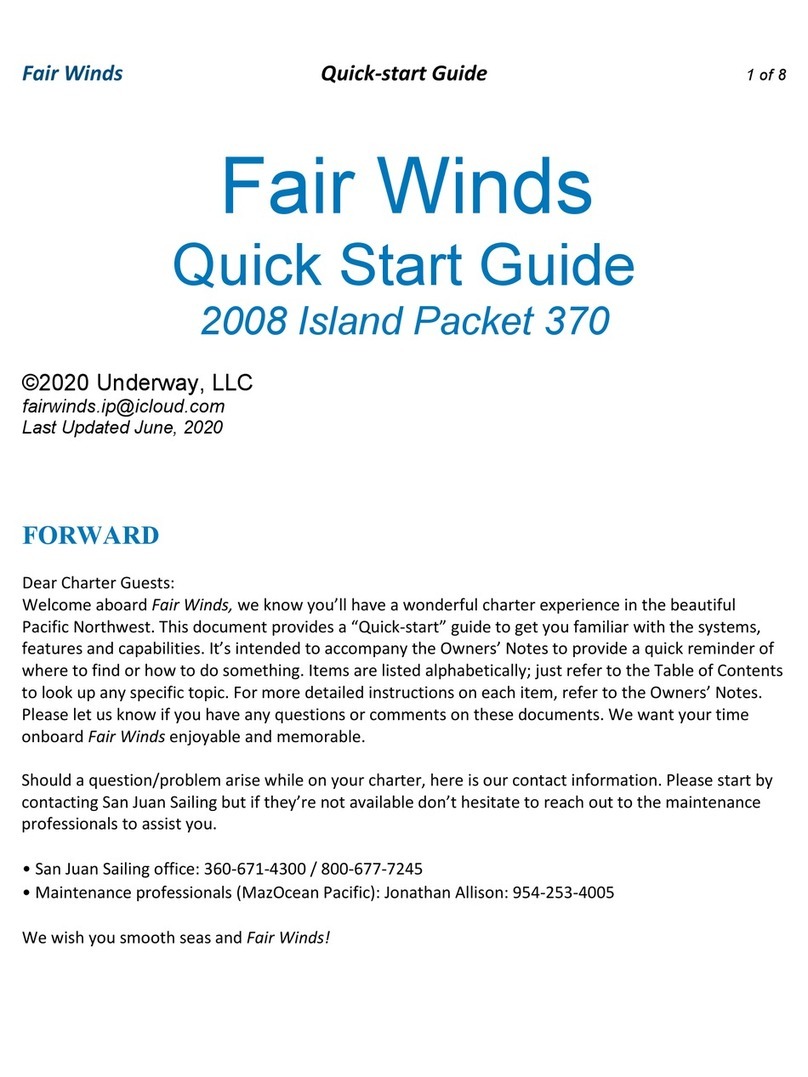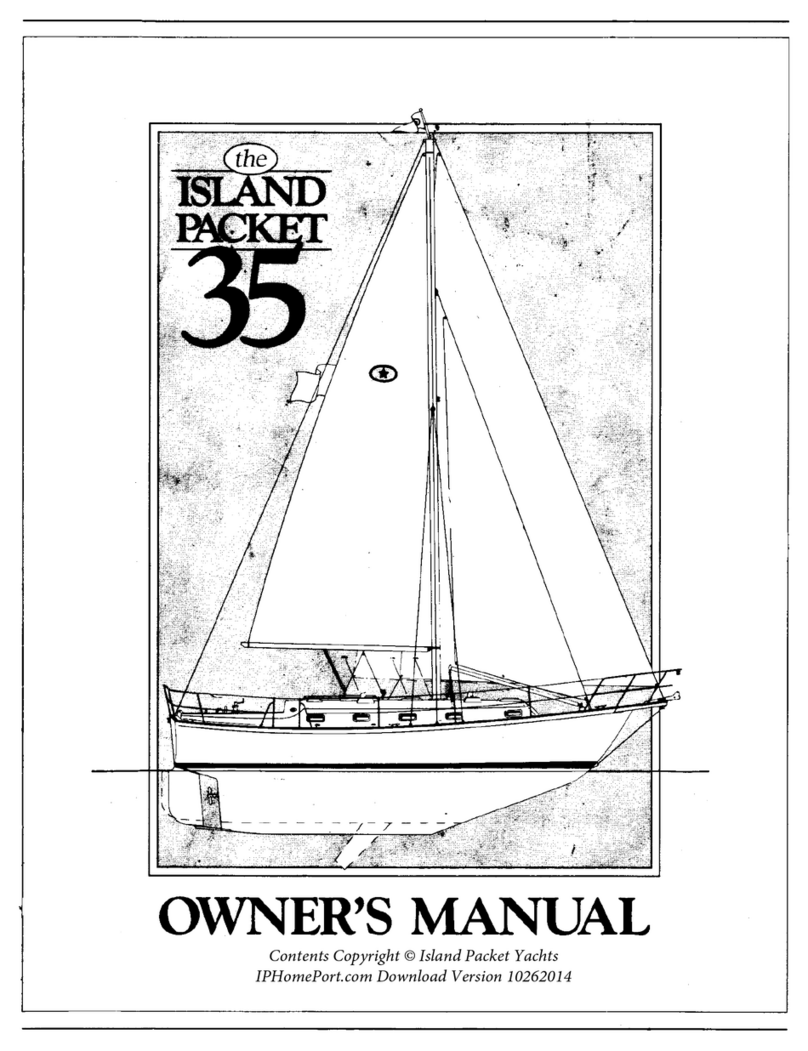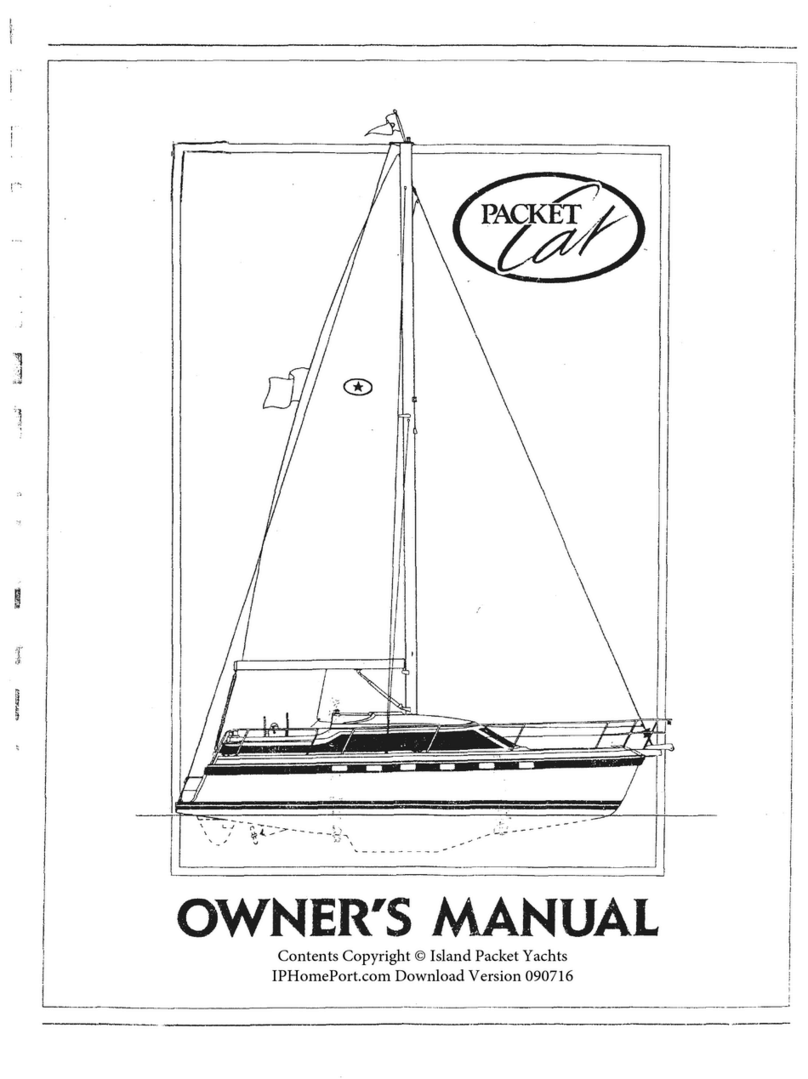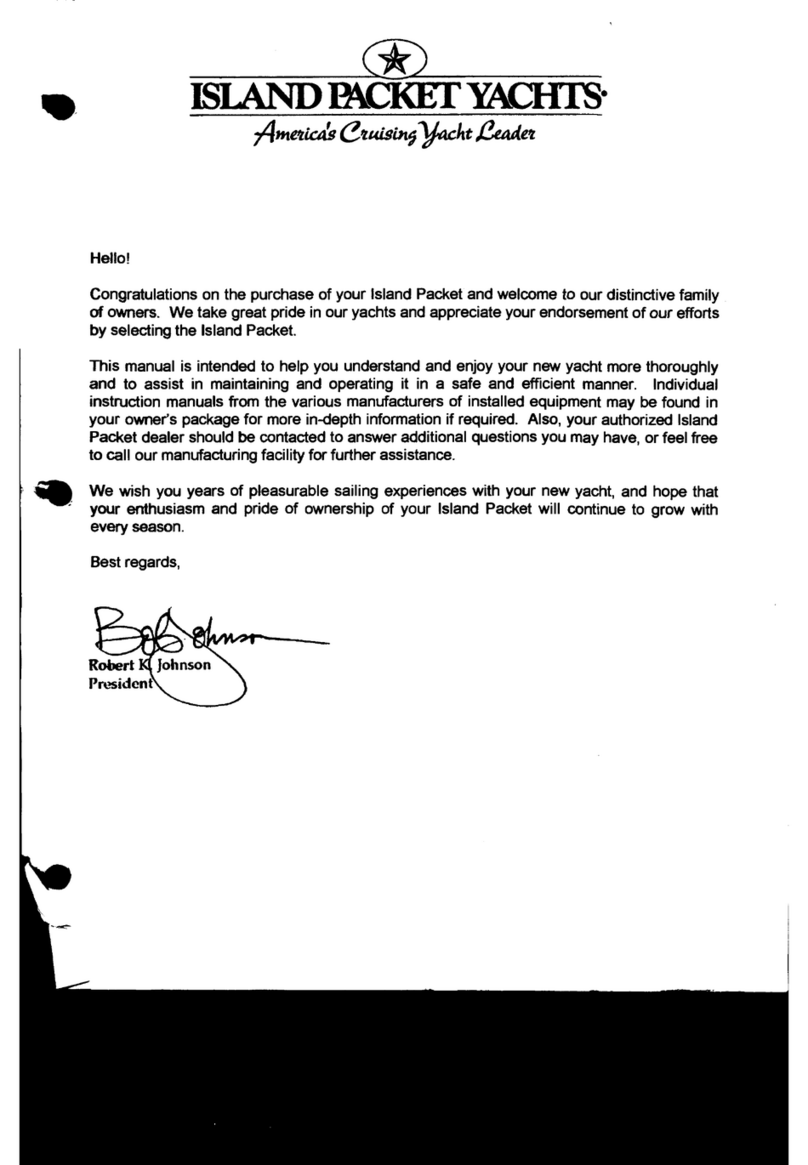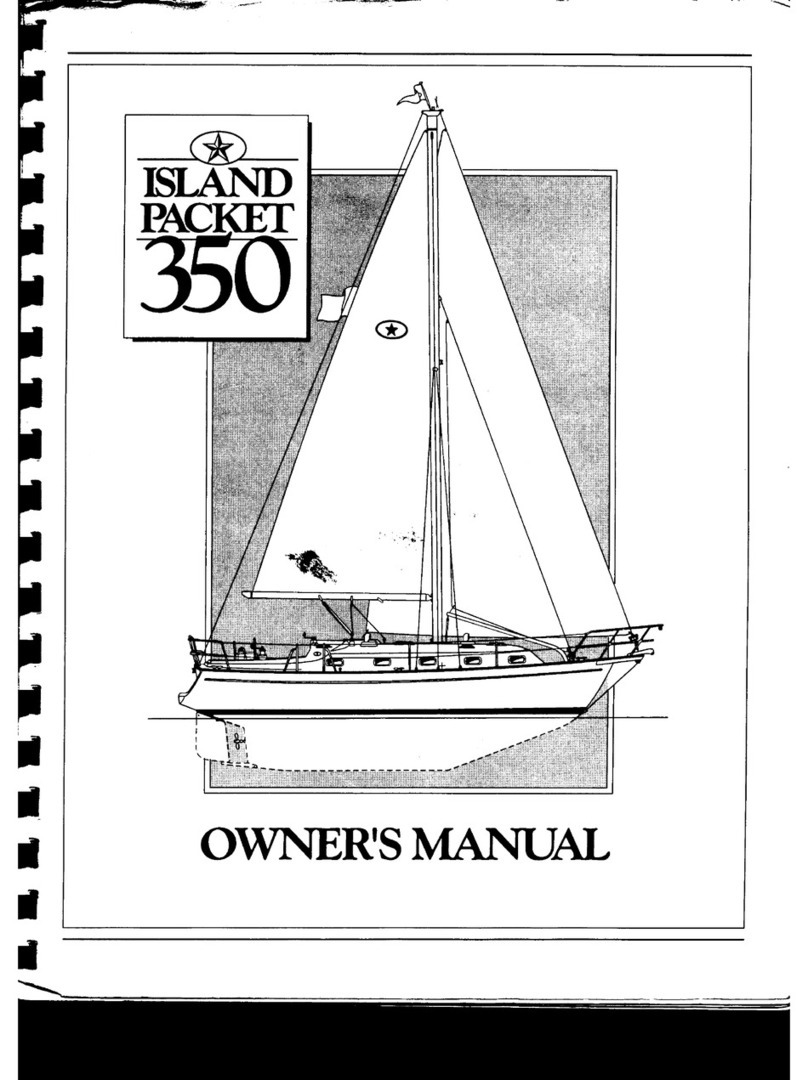
iii
INTRODUCTION
Due
to
our
policy
of
continuous
product improvement,
the
illustrations used
in
this
manual
may
not
be
identical
to
the
components,
controls,
gauges,
etc.
on
your
boat.
They
are intended to
be
representative reference views..
Some
controls,
indicators
and
infocmation
may
be
optional
and
not
included
on
your
craft.
PLEASE KEEP
THIS
MANUAL
IN
A SECURE PLACE,
AND
HAND
IT
OVER
ALONG
WfTII
ALL
MANUALS
FOR
ONBOARD
EQUIPMENT
TO
THE
NEW
OWNER
IF
YOU
SELL THE YACHT. PLEASE
HAVE
THE
NEW
OWNER
CONTACT
ISLAND
PACKET YACHTS
TO
REQUEST
ANY
MANUAL
OR
INFORMATION
NEEDED.
Your
Island
Packet
is
certified
by
the
National
Marine
Manufacturer's
•
Association
(NMMA)
as
confoaning
to
standards
for
many
aspects
of
•
construction,
design
and materials.
These
standards cover electrical,
plumbing,
and
fuel
systems
and
many
of
the
products
used
in
constn1ction
(pumps,
navigation
lights, tanks, etc.). For more
infonnation
contact
the
NMMA,
at
200 E.
Randolph
Drive,
Suite
5100, Chicago, IT. 60601,
Tel
(312) 946-
6200.
Your
Island
Packet
also
meets
all
current
requirements
for
the
EU
Directive
for
Recreational
Craft,
Category
A
Ocean
and
has
been
issued
a certificate
by
the
International
Marine
Certification
Institute
(IMCI).
The
EU
Directive
covers a
wide
variety
of
items from
design
and
structure
to
individual
components
approval. Further infonna.tion
on
the
IMCI certification
is
available
by
contacting
them
at
TrevesCentre rue
de
Treves 45, 1040 Brussels,
Belgium,
Telephone
international
+
(32)
22387892.
While
Island
Packet
Yachts
makes
every
effort
to
keep
this
manual
current
and
accurate
note
that
due
to
changes
in
suppliers and/or process
technologies
some
items
or
equipment
may
vary &om
the
description
in
this
manual. All
specifications
and
measurements are approximate
and
subject
to
change
without
notice. •






